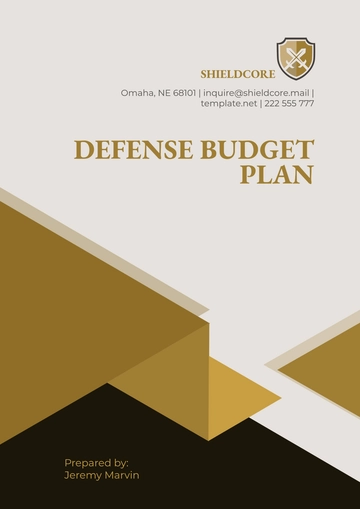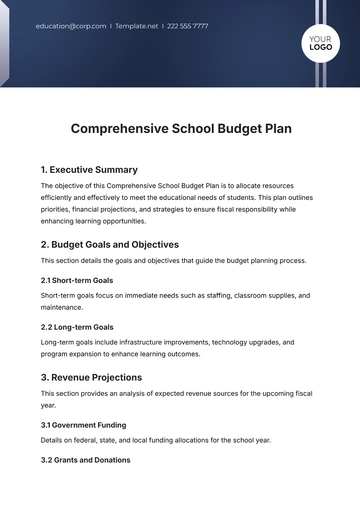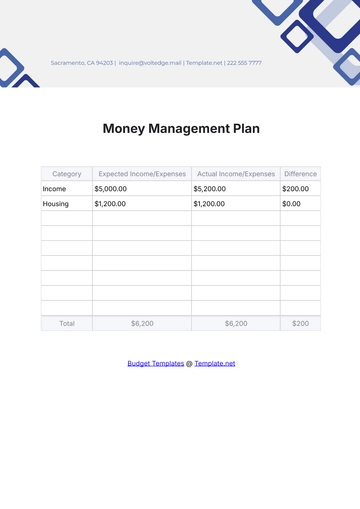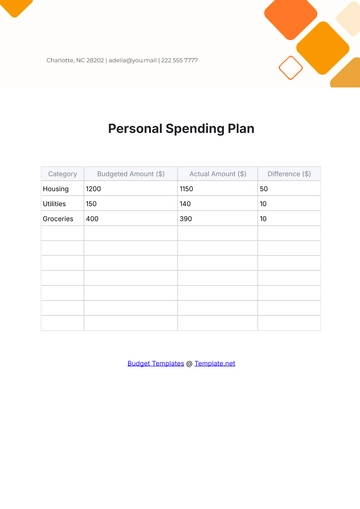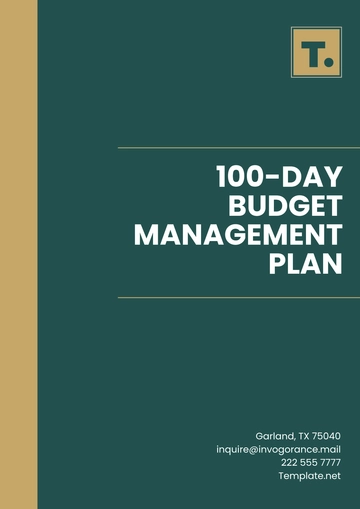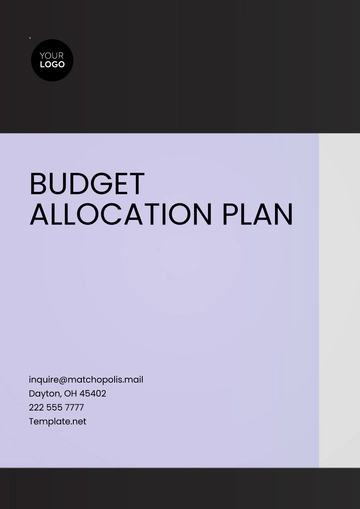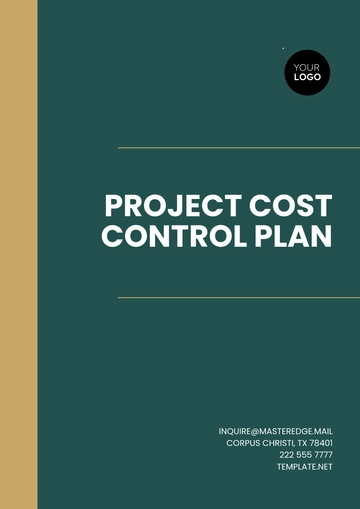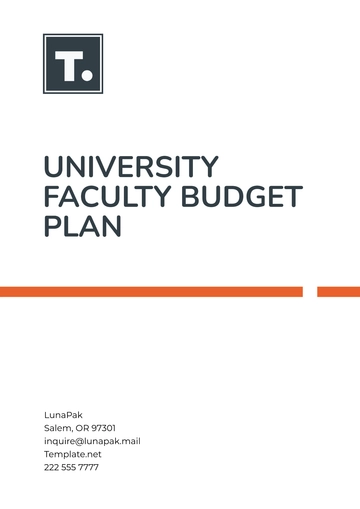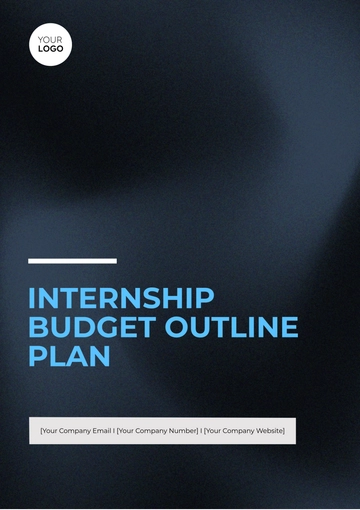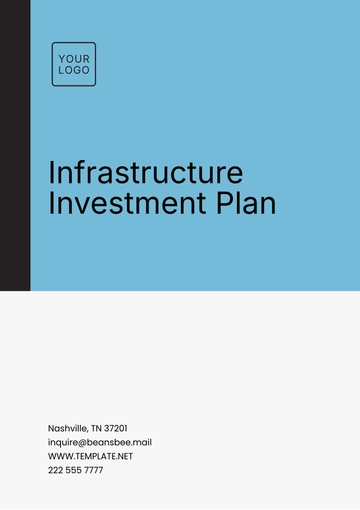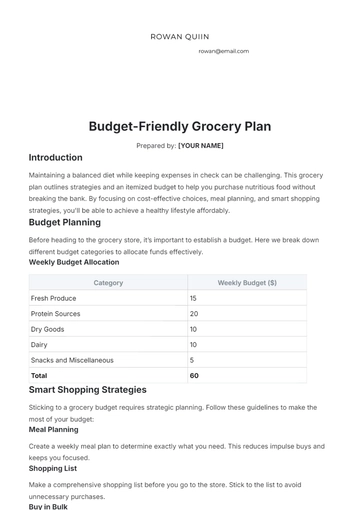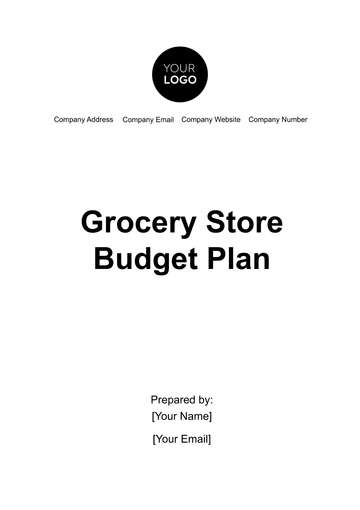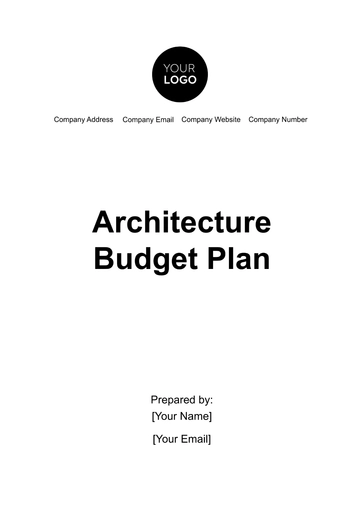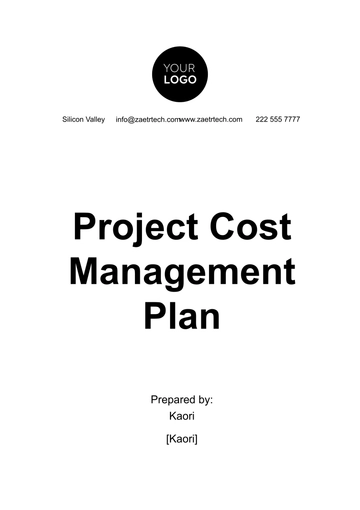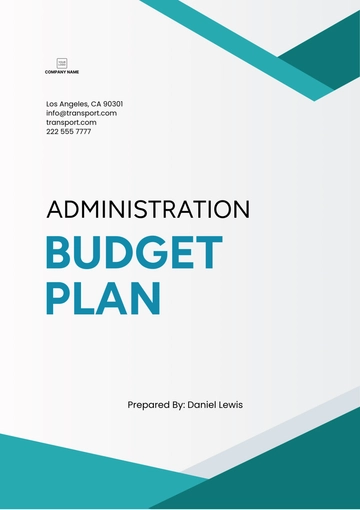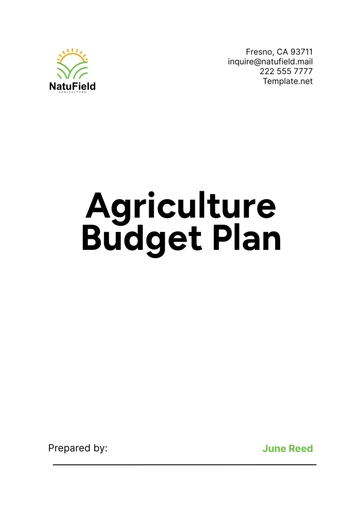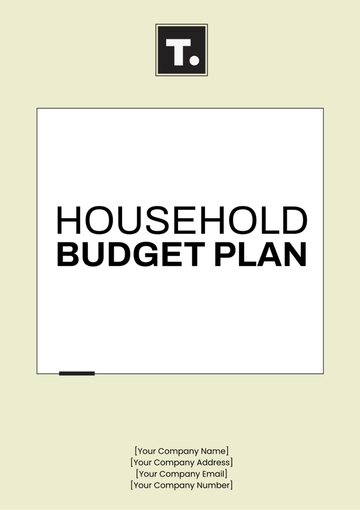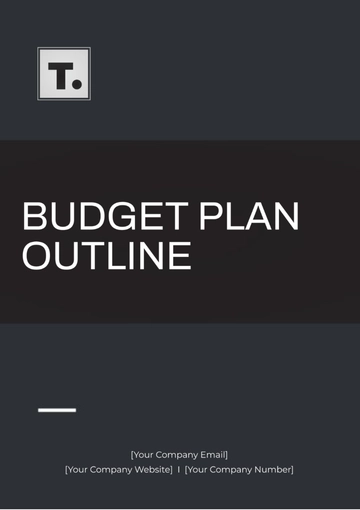Free Agriculture Cost Management Plan
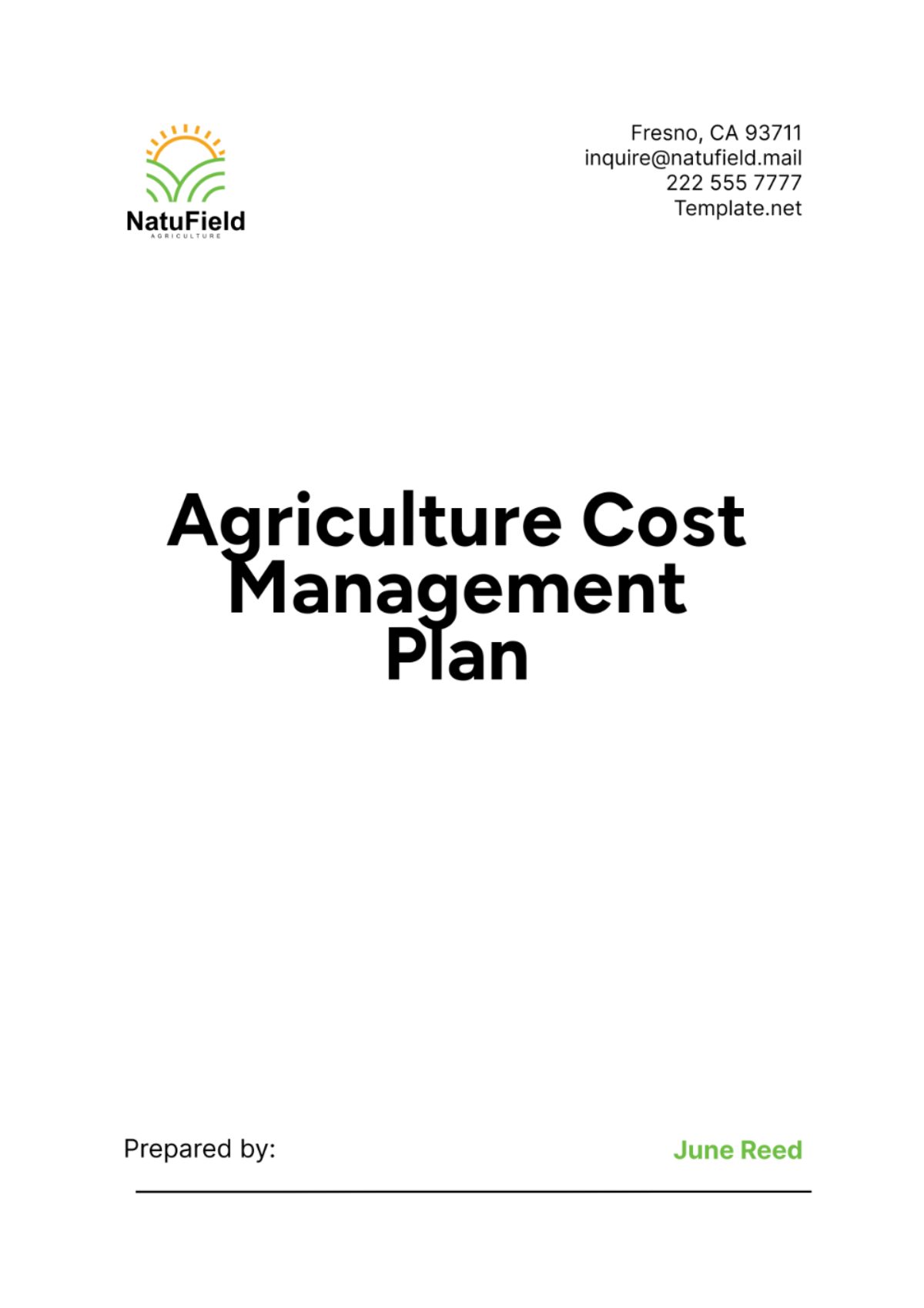
I. Introduction
At [Your Company Name], strategic financial management is integral to our operational success and long-term viability in the agricultural sector. The Agriculture Cost Management Plan is crafted to meticulously allocate budgets, monitor expenditures, and enhance resource utilization efficiency. By adopting a proactive approach to risk management, we aim to mitigate financial risks and capitalize on emerging opportunities. Furthermore, through regular profitability assessments and strategic financial decision-making, we maintain a robust financial position and optimize returns on investment. This plan reflects our commitment to sustainable growth, operational excellence, and financial stewardship in agricultural practices.
II. Objectives
This section outlines key objectives for [Your Company Name]'s Agriculture Cost Management Plan:
Budget Optimization: Allocate financial resources efficiently to maximize productivity and minimize waste, ensuring sustainable growth for [Your Company Name].
Cost Monitoring: Implement robust tracking systems to monitor expenses in real-time, allowing for prompt adjustments and maintaining financial stability.
Resource Utilization: Enhance the use of available resources through strategic planning and innovative practices to reduce operational costs.
Risk Management: Identify potential financial risks and develop mitigation strategies to safeguard against unexpected expenses and market volatility.
Profitability Analysis: Regularly analyze financial data to assess profitability, guiding strategic decisions that align with the long-term goals of [Your Company Name].
III. Scope Description
This comprehensive Management Plan applies to all financial facets and operational domains of [Your Company Name] within the agricultural sector. It encompasses rigorous budgeting methodologies, precise expense tracking systems, strategic resource allocation frameworks, proactive risk mitigation strategies, and in-depth profitability analysis protocols. By integrating these elements across our operations, we ensure efficient financial management that supports sustainable growth, operational resilience, and strategic decision-making aligned with our long-term agricultural objectives.
IV. Specific Responsibilities
This section outlines the key roles and responsibilities within [Your Company Name]'s Agriculture Cost Management Plan:
Role | Responsibilities |
|---|---|
Financial Manager | Oversee budget allocation across all agricultural operations to ensure optimal resource utilization and cost efficiency. |
Implement robust cost monitoring systems to track expenses and financial performance effectively. | |
Analyze financial data regularly to identify trends, opportunities for cost savings, and areas for investment. | |
Develop and execute strategies to mitigate financial risks, such as market fluctuations and operational uncertainties. | |
Operations Manager | Coordinate resource utilization within agricultural activities to minimize costs while maintaining productivity and quality standards. |
Ensure the efficient implementation of the cost management plan across all operational functions. | |
Streamline operational practices and workflows to enhance efficiency and reduce overhead expenses. | |
Collaborate with the Financial Manager to align operational goals with financial objectives and strategies. | |
Accounting Team | Maintain accurate and up-to-date financial records for all agricultural expenditures and revenue streams. |
Track expenses in real-time using advanced accounting software and tools to ensure transparency and accuracy. | |
Assist in profitability analysis by preparing detailed financial reports, including income statements, balance sheets, and cash flow statements. | |
Provide financial insights and recommendations to support strategic decision-making and operational planning. |
V. Timeline
This section outlines the milestones, durations, and completion dates for [Your Company Name]'s Agriculture Cost Management Plan:
Milestone | Duration | Completion Date | Details |
|---|---|---|---|
Initial Budget Allocation | 2 weeks | [Date] | Allocate and finalize budget distribution across all agricultural operations. |
Cost Monitoring System Implementation | 1 month | [Date] | Implement robust systems to monitor expenses and financial performance effectively. |
Resource Utilization Assessment | 3 weeks | [Date] | Assess and optimize resource utilization strategies to minimize operational costs. |
Risk Analysis and Mitigation Planning | 1 month | [Date] | Conduct thorough risk analysis and develop strategies to mitigate financial risks and uncertainties. |
Profitability Analysis Report | Ongoing | Quarterly | Regularly analyze financial data and prepare detailed reports to assess profitability and guide decisions. |
VI. Resource Allocation Details
This section provides a detailed breakdown of the allocation of financial, human, and technological resources within [Your Company Name]'s Agriculture Cost Management Plan:
Resource Type | Details |
|---|---|
Financial Resources | Allocate $50,000 for seed procurement, $20,000 for irrigation systems, and $10,000 for maintenance. |
Set aside $15,000 for crop insurance and $5,000 for marketing expenses annually. | |
Monitor expenditures closely to ensure adherence to a total annual budget of $100,000. | |
Regularly review financial reports to assess spending patterns and identify areas for cost reduction. | |
Human Resources | Assign Financial Manager with an annual salary budget of $80,000 to oversee budget allocation and financial performance. |
Appoint Operations Manager with an annual salary budget of $70,000 to streamline resource utilization and operational efficiency. | |
Engage Accounting Team with an annual budget of $40,000 to maintain accurate financial records and facilitate profitability analysis. | |
Allocate $10,000 annually for staff training on cost management strategies and financial accountability. | |
Technological Resources | Implement advanced accounting software with an initial investment of $30,000 for real-time expense tracking and financial reporting. |
Utilize data analytics tools with an annual subscription cost of $15,000 to analyze spending trends and optimize resource allocation. | |
Integrate cloud-based platforms with a setup cost of $20,000 for accessible and secure financial data management. | |
Explore automated budget forecasting systems with a development cost estimate of $25,000 for proactive financial decision-making. |
VII. Communication Plan
This section outlines the comprehensive communication strategies crucial for effectively implementing [Your Company Name]'s Agriculture Cost Management Plan:
Communication Method | Details |
|---|---|
Monthly Meetings | Conduct monthly meetings involving key stakeholders, including department heads and financial managers. Review progress, discuss challenges, and strategize adjustments to ensure alignment with cost management goals. Evaluate budget utilization and propose corrective actions where necessary. |
Email Updates | Implement bi-weekly written updates to distribute progress reports, highlight key milestones, and provide insights on emerging financial trends and challenges. Ensure timely dissemination of information across all departments and stakeholders to foster transparency and maintain alignment with strategic objectives. |
Quarterly Reports | Develop comprehensive quarterly reports presenting detailed financial analysis, performance metrics, and strategic recommendations to senior management. Include profitability insights, cost-saving initiatives, and risk management strategies to support informed decision-making and optimize resource allocation. |
VIII. Risk Management
This section details proactive risk management strategies essential for [Your Company Name]'s Agriculture Cost Management Plan:
Risk Management Strategy | Details |
|---|---|
Identifying Financial Risks | Conduct regular assessments to identify potential financial risks such as market fluctuations, crop failures, regulatory changes, and currency exchange rate fluctuations. Utilize historical data, market analysis, and expert forecasts to anticipate and mitigate risks effectively. |
Developing Contingency Plans | Create robust contingency plans to address unforeseen events such as natural disasters, supply chain disruptions, and economic downturns. Define specific actions, responsibilities, and communication protocols to ensure rapid response and minimize financial impact. |
Maintaining Adequate Reserves | Establish and maintain financial reserves equivalent to at least 3 months of operational expenses to mitigate cash flow interruptions. Regularly review and adjust reserve levels based on risk assessments, financial performance, and market conditions to uphold financial stability. |
Risk Transfer Strategies | Evaluate insurance options to transfer specific risks, such as crop insurance for agricultural losses or liability insurance for operational risks. Partner with reputable insurers to tailor coverage that aligns with business objectives and regulatory requirements. |
Scenario Planning | Conduct scenario planning exercises to simulate potential risk scenarios and develop proactive strategies. Assess the impact of various risk events on financial performance and operational continuity to refine risk management strategies accordingly. |
Monitoring and Review | Implement a robust monitoring framework to track identified risks, monitor mitigation actions' effectiveness, and update risk profiles regularly. Conduct periodic reviews with senior management to reassess risk tolerance, adjust strategies, and ensure alignment with organizational goals. |
IX. Quality Assurance/Control
This section ensures the quality of cost management practices within [Your Company Name]'s Agriculture Cost Management Plan:
Quality Assurance/Control Measure | Details |
|---|---|
Regular Audits and Reviews | Conduct regular audits and reviews of financial records to ensure accuracy, compliance, and alignment with budgetary guidelines. Evaluate expense reports, income statements, and balance sheets to identify discrepancies and ensure transparency. |
Establishing Performance Metrics | Define performance metrics such as cost variance, return on investment (ROI), and budget adherence to measure the effectiveness of the cost management plan. Utilize benchmarking and industry standards to assess performance and identify areas for improvement. |
Implementing Corrective Actions | Develop and implement corrective actions for any identified discrepancies or inefficiencies in financial management processes. Establish clear escalation procedures and timelines for addressing issues to maintain operational integrity and financial stability. |
Continuous Improvement Initiatives | Initiate continuous improvement initiatives based on audit findings and performance metrics to optimize cost management practices. Foster a culture of accountability and innovation among staff to drive sustainable improvements and achieve long-term financial goals. |
Training and Development | Provide ongoing training and development opportunities to financial personnel on best practices, regulatory updates, and technological advancements in cost management. Enhance skills in financial analysis, risk assessment, and compliance to uphold quality standards and mitigate operational risks. |
X. Monitoring & Evaluation
This section outlines the continuous monitoring and evaluation mechanisms within [Your Company Name]'s Agriculture Cost Management Plan:
Monitoring & Evaluation Mechanism | Details |
|---|---|
Real-time Tracking of Expenses | Implement real-time tracking systems to monitor expenses and budget utilization continuously. Utilize advanced accounting software and cloud-based platforms for accurate data analysis and decision-making support. |
Regular Review Meetings | Conduct regular review meetings with key stakeholders to assess project progress, discuss challenges, and strategize solutions. Ensure alignment with cost management objectives and timely resolution of issues. |
Comprehensive Reports | Generate comprehensive reports analyzing profitability, cost-effectiveness, and financial performance metrics. Provide insights into budget variance, ROI, and strategic recommendations for improving operational efficiency. |
Key Performance Indicators (KPIs) | Define KPIs such as cost-to-income ratio, operational efficiency metrics, and resource utilization rates to measure performance against established benchmarks. Monitor KPI trends to identify areas for enhancement and ensure alignment with strategic goals. |
Feedback Mechanisms | Establish feedback mechanisms to solicit input from stakeholders on cost management effectiveness and identify opportunities for process improvement. Utilize feedback to refine strategies and enhance operational outcomes. |
XI. Stakeholder Engagement
This section details how stakeholders are engaged in [Your Company Name]'s Agriculture Cost Management Plan:
Stakeholder Engagement Approach | Details |
|---|---|
Inclusive Decision-Making Processes | Foster inclusive decision-making through consultations with stakeholders, including department heads, financial managers, and key personnel. Encourage participation in strategic planning to align financial goals with organizational objectives. |
Regular Updates and Transparent Communication | Provide regular updates on financial performance through transparent communication channels, such as quarterly newsletters and bi-annual meetings. Share insights on cost management strategies, challenges, and achievements to build trust and accountability among stakeholders. |
Collaboration with Key Partners and Suppliers | Collaborate with key partners and suppliers to optimize cost efficiencies through joint initiatives and negotiation of favorable terms. Develop strategic alliances that support sustainable cost reduction while ensuring quality and reliability in supply chain management. |
Feedback Collection and Integration | Establish mechanisms for collecting stakeholder feedback on cost management strategies and operational performance. Integrate feedback into decision-making processes to enhance stakeholder engagement and improve outcomes. |
Training and Capacity Building | Provide training and capacity-building opportunities to stakeholders on cost management principles, financial literacy, and industry trends. Empower stakeholders with the knowledge and skills needed to actively contribute to cost-saving initiatives and organizational growth. |
XII. Flexibility
This section emphasizes the flexibility of [Your Company Name]'s Agriculture Cost Management Plan:
Flexibility Measures | Details |
|---|---|
Adaptability to Market Conditions | Ensure the plan remains adaptable to changing market dynamics, including price fluctuations and regulatory changes. Conduct regular assessments to adjust strategies accordingly. |
Operational Requirement Adjustments | Modify operational strategies and resource allocation based on evolving business needs and industry trends. Implement agile practices to maintain efficiency and responsiveness. |
Continuous Review and Updates | Conduct periodic reviews to evaluate the plan's relevance and effectiveness. Incorporate feedback from stakeholders and key performance indicators (KPIs) to optimize outcomes. |
Scenario Planning and Contingency Strategies | Develop contingency plans and scenario analyses to mitigate risks and capitalize on emerging opportunities. Prepare alternative courses of action to maintain operational continuity. |
Dynamic Decision-Making Framework | Establish a dynamic decision-making framework that empowers teams to make informed decisions swiftly in response to market changes and internal challenges. Foster a culture of innovation and adaptability. |
XIII. Conclusion
[Your Company Name]'s Agriculture Cost Management Plan is designed to ensure sustainable financial health and operational efficiency in a dynamic market environment. By prioritizing proactive risk management, continuous monitoring, and stakeholder engagement, the plan aims to optimize resource utilization and enhance profitability. Flexibility remains at its core, enabling swift adaptation to market fluctuations and evolving operational requirements. Through regular reviews, updates, and inclusive decision-making processes, the plan is poised to deliver enduring value, foster innovation, and support long-term growth objectives. By adhering to these principles, [Your Company Name] is well-positioned to navigate challenges and capitalize on opportunities in the agricultural sector.
- 100% Customizable, free editor
- Access 1 Million+ Templates, photo’s & graphics
- Download or share as a template
- Click and replace photos, graphics, text, backgrounds
- Resize, crop, AI write & more
- Access advanced editor
Discover the Agriculture Cost Management Plan Template on Template.net, an essential tool for marketing professionals in the agriculture industry. This fully customizable and editable template is designed to streamline your cost management processes. Gain efficiency and precision with a plan that’s effortlessly editable in our AI Editor Tool. Elevate your cost management strategy and ensure success today!
You may also like
- Finance Plan
- Construction Plan
- Sales Plan
- Development Plan
- Career Plan
- Budget Plan
- HR Plan
- Education Plan
- Transition Plan
- Work Plan
- Training Plan
- Communication Plan
- Operation Plan
- Health And Safety Plan
- Strategy Plan
- Professional Development Plan
- Advertising Plan
- Risk Management Plan
- Restaurant Plan
- School Plan
- Nursing Home Patient Care Plan
- Nursing Care Plan
- Plan Event
- Startup Plan
- Social Media Plan
- Staffing Plan
- Annual Plan
- Content Plan
- Payment Plan
- Implementation Plan
- Hotel Plan
- Workout Plan
- Accounting Plan
- Campaign Plan
- Essay Plan
- 30 60 90 Day Plan
- Research Plan
- Recruitment Plan
- 90 Day Plan
- Quarterly Plan
- Emergency Plan
- 5 Year Plan
- Gym Plan
- Personal Plan
- IT and Software Plan
- Treatment Plan
- Real Estate Plan
- Law Firm Plan
- Healthcare Plan
- Improvement Plan
- Media Plan
- 5 Year Business Plan
- Learning Plan
- Marketing Campaign Plan
- Travel Agency Plan
- Cleaning Services Plan
- Interior Design Plan
- Performance Plan
- PR Plan
- Birth Plan
- Life Plan
- SEO Plan
- Disaster Recovery Plan
- Continuity Plan
- Launch Plan
- Legal Plan
- Behavior Plan
- Performance Improvement Plan
- Salon Plan
- Security Plan
- Security Management Plan
- Employee Development Plan
- Quality Plan
- Service Improvement Plan
- Growth Plan
- Incident Response Plan
- Basketball Plan
- Emergency Action Plan
- Product Launch Plan
- Spa Plan
- Employee Training Plan
- Data Analysis Plan
- Employee Action Plan
- Territory Plan
- Audit Plan
- Classroom Plan
- Activity Plan
- Parenting Plan
- Care Plan
- Project Execution Plan
- Exercise Plan
- Internship Plan
- Software Development Plan
- Continuous Improvement Plan
- Leave Plan
- 90 Day Sales Plan
- Advertising Agency Plan
- Employee Transition Plan
- Smart Action Plan
- Workplace Safety Plan
- Behavior Change Plan
- Contingency Plan
- Continuity of Operations Plan
- Health Plan
- Quality Control Plan
- Self Plan
- Sports Development Plan
- Change Management Plan
- Ecommerce Plan
- Personal Financial Plan
- Process Improvement Plan
- 30-60-90 Day Sales Plan
- Crisis Management Plan
- Engagement Plan
- Execution Plan
- Pandemic Plan
- Quality Assurance Plan
- Service Continuity Plan
- Agile Project Plan
- Fundraising Plan
- Job Transition Plan
- Asset Maintenance Plan
- Maintenance Plan
- Software Test Plan
- Staff Training and Development Plan
- 3 Year Plan
- Brand Activation Plan
- Release Plan
- Resource Plan
- Risk Mitigation Plan
- Teacher Plan
- 30 60 90 Day Plan for New Manager
- Food Safety Plan
- Food Truck Plan
- Hiring Plan
- Quality Management Plan
- Wellness Plan
- Behavior Intervention Plan
- Bonus Plan
- Investment Plan
- Maternity Leave Plan
- Pandemic Response Plan
- Succession Planning
- Coaching Plan
- Configuration Management Plan
- Remote Work Plan
- Self Care Plan
- Teaching Plan
- 100-Day Plan
- HACCP Plan
- Student Plan
- Sustainability Plan
- 30 60 90 Day Plan for Interview
- Access Plan
- Site Specific Safety Plan
